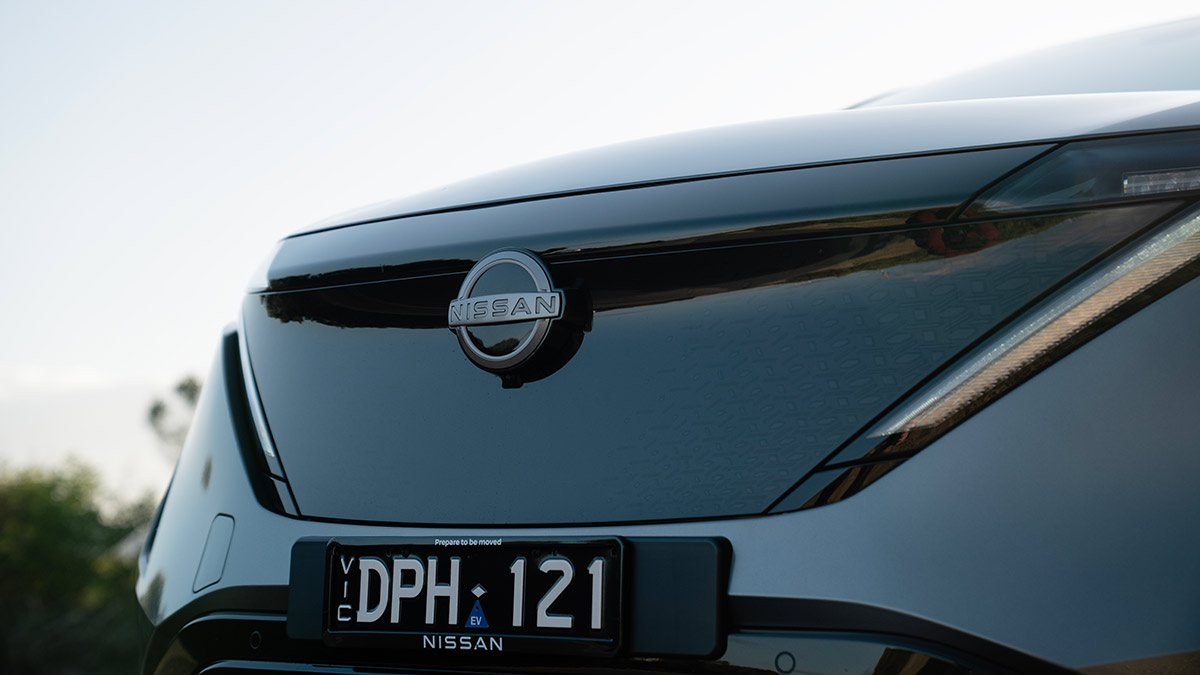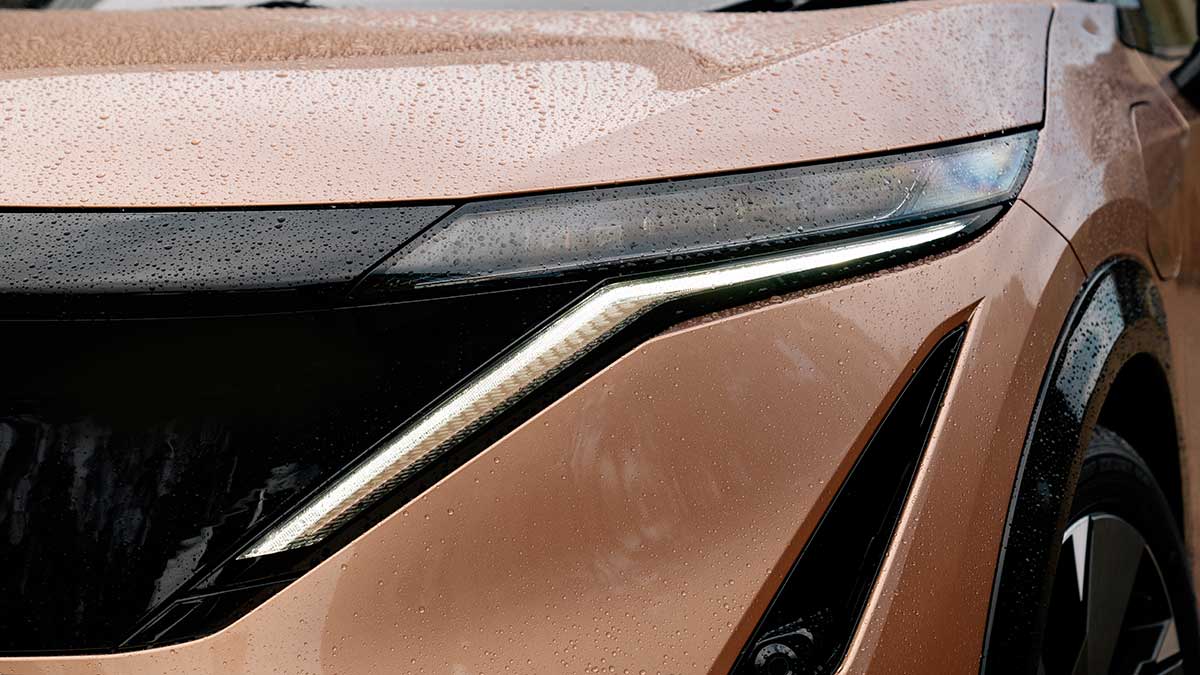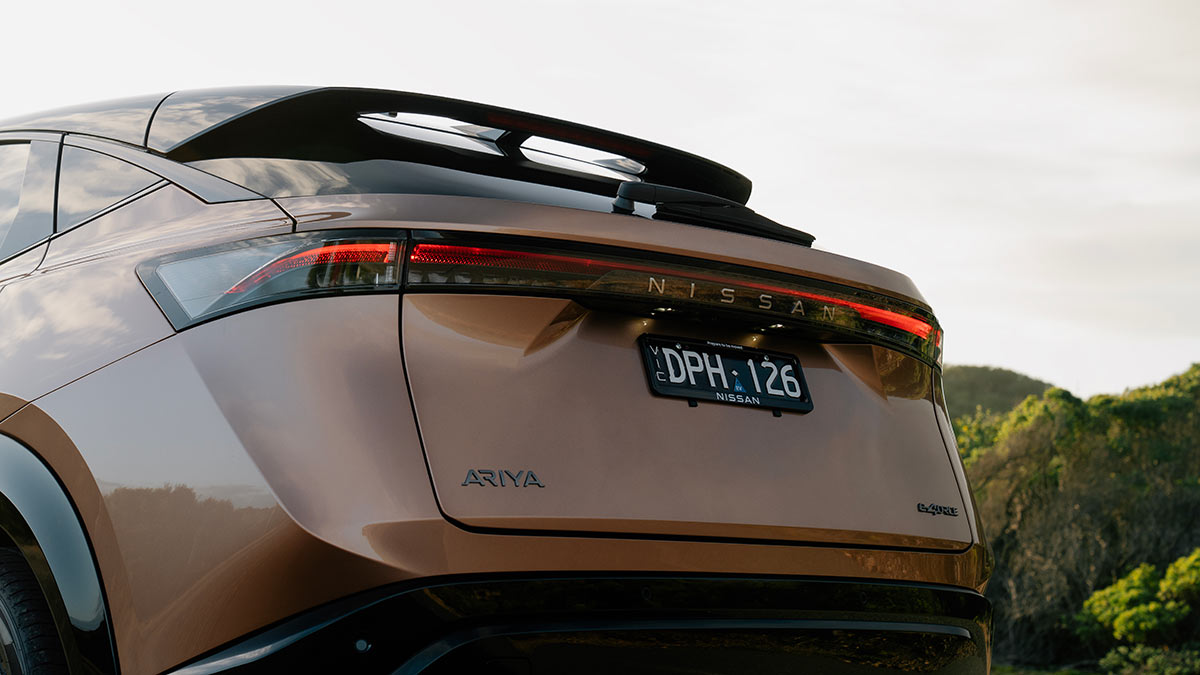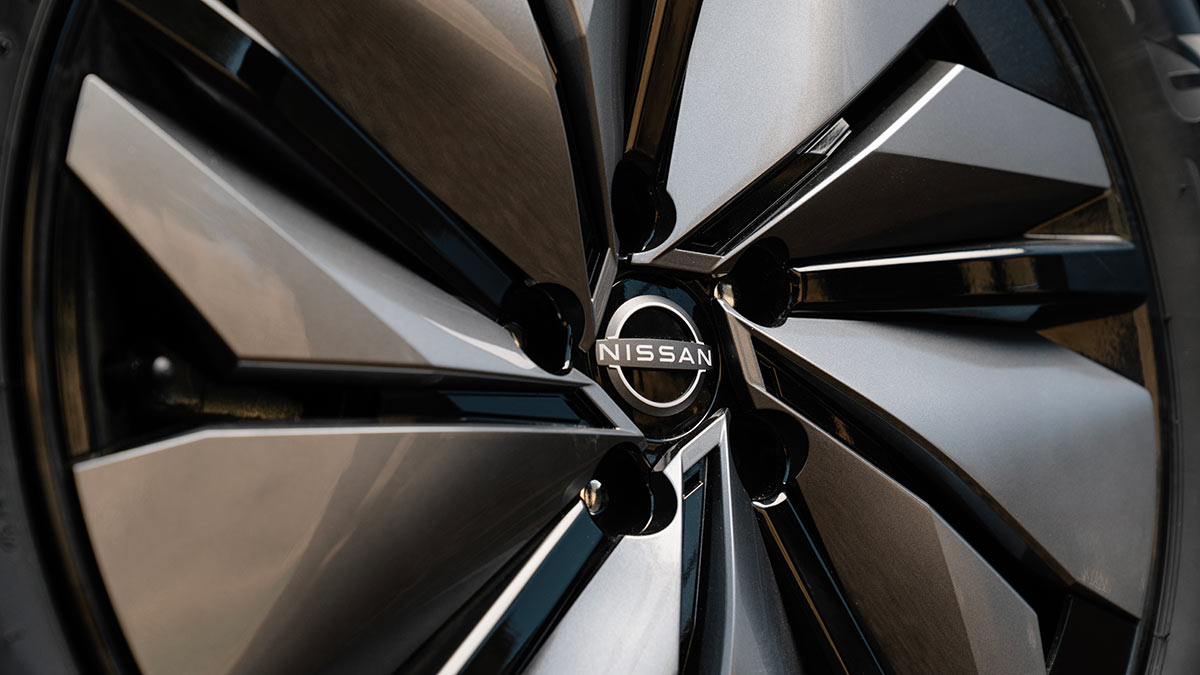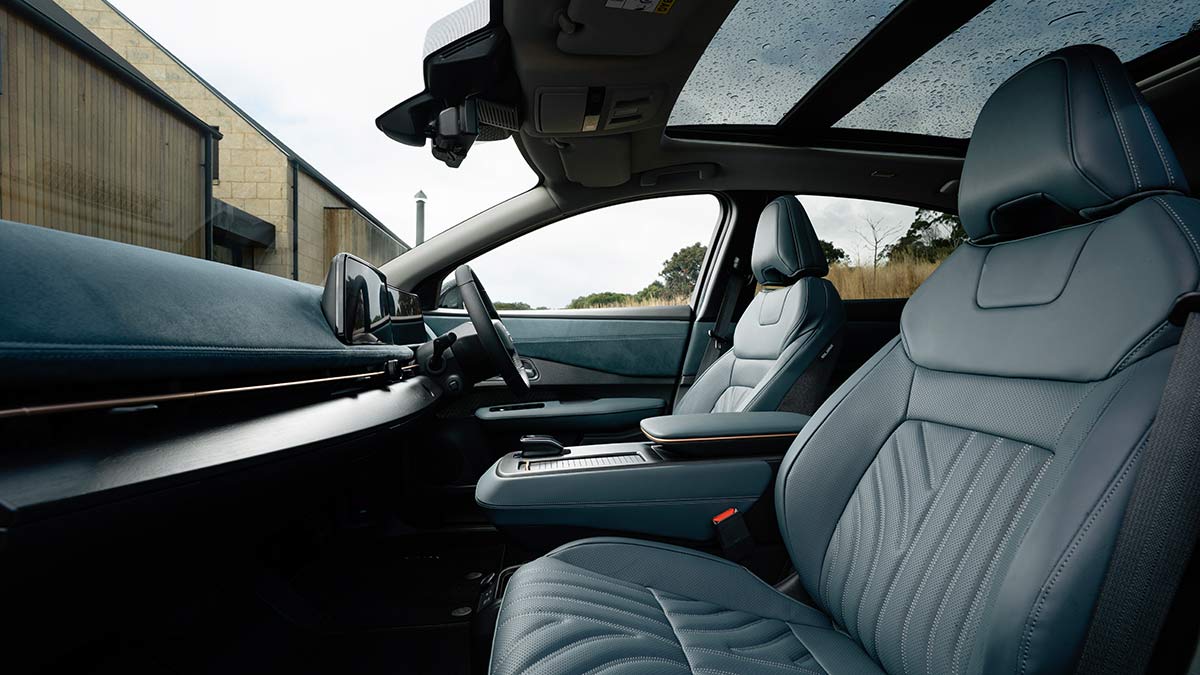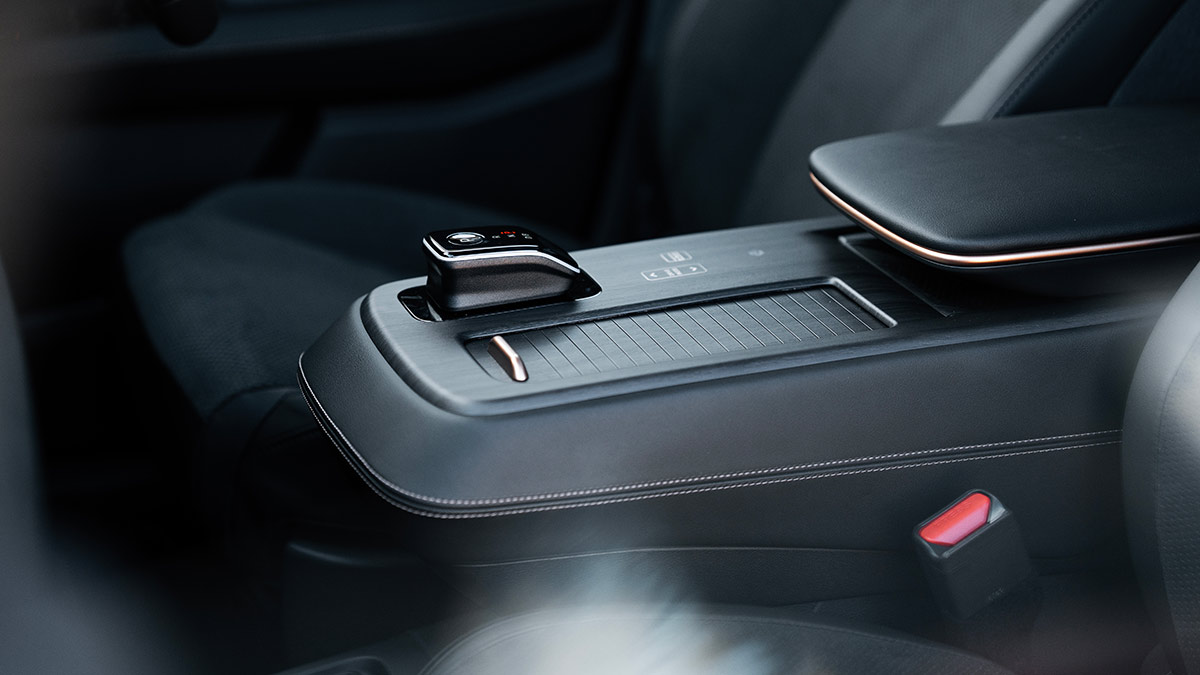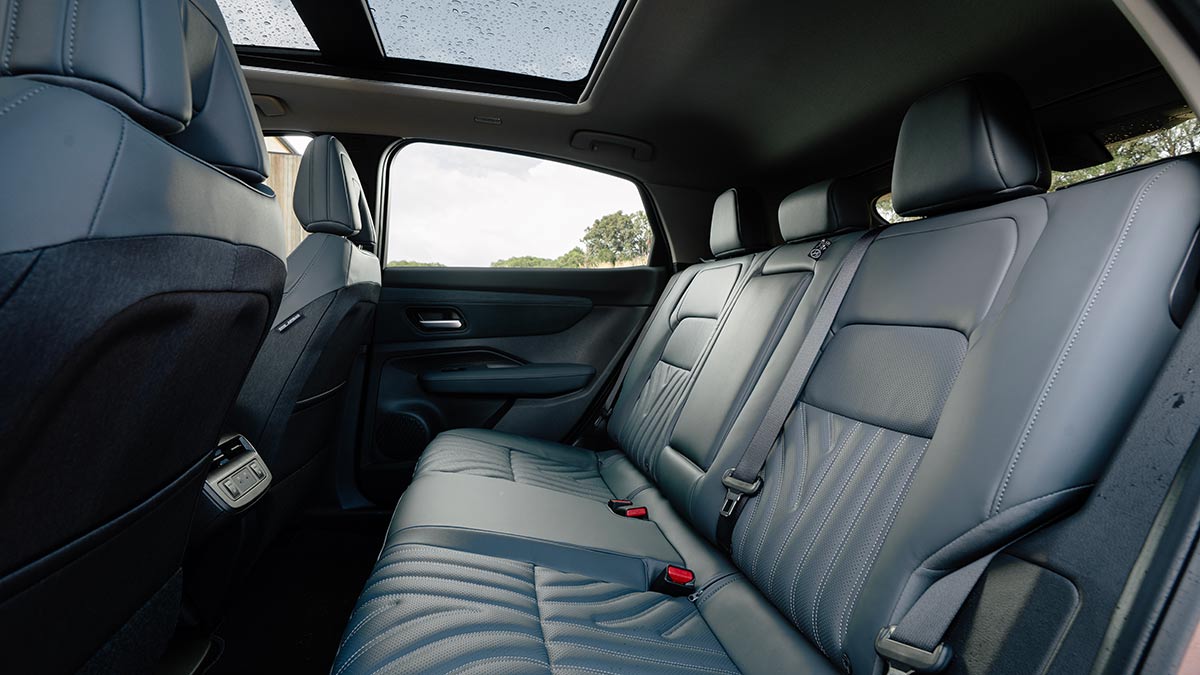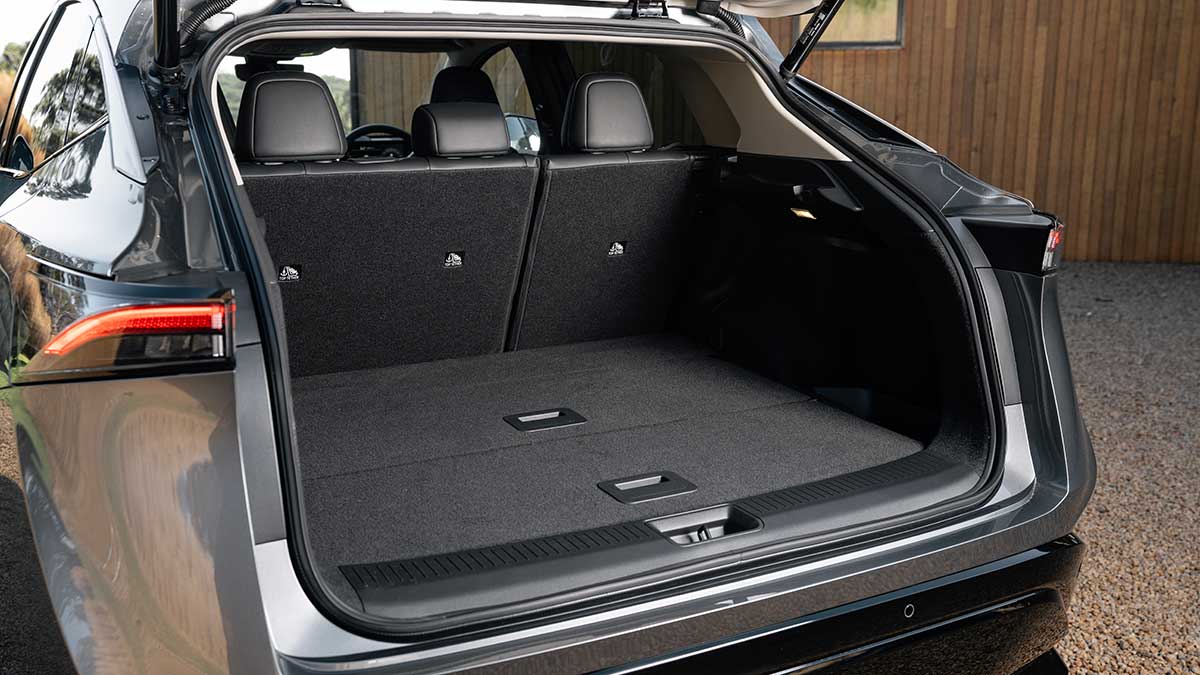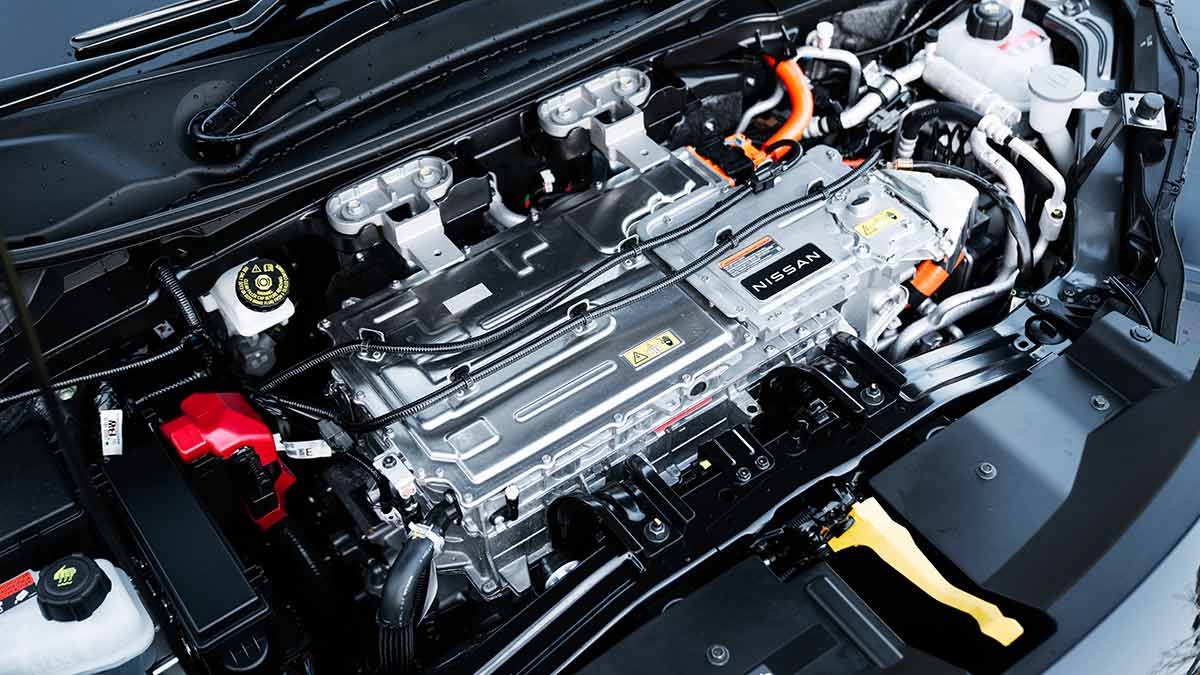The Nissan Ariya EV is coming soon in the popular medium SUV class, taking the fight up to Tesla, BYD and other big brands with a broad range and competitive pricing.
2025 Nissan Ariya review

Is this the easiest EV to drive? The striking new Nissan Ariya medium SUV provides a fresh alternative to the Tesla Model Y.
The 2025 Nissan Ariya has arrived in Australia, thrust in amongst the most sought-after EVs that sit in prime position in the top-selling medium SUV segment.
Whether Nissan’s five-seater electric family SUV can make inroads into the market share held by the Tesla Model Y, BYD Sealion 7 and Kia EV5 will depend on how buyers react to its unique design inside and out and the persuasiveness of the overall package, including its competitive pricing, equipment, power, driving range, roominess and, not least of all, its user-friendliness.
On paper, Ariya looks to have many bases covered and the Japanese carmaker is hoping to sell not just hundreds but thousands per annum – and not just to previous Nissan Leaf owners and others faithful to the brand, many of whom will be moving from hybrid to full-electric for the first time.
That said, managing director of Nissan Oceania, Andrew Humberstone, insists the carmaker will take a measured approach and grow volume based on customer demand, protecting residual values in the process and avoiding the situation where dealers resort to discounting unwanted cars due to oversupply.
“There is no point bringing in a car to sell a few hundred cars a year,” he says. “[But] this is our flagship product and we need to look after it. I want to build an order bank for the vehicle … and we’ll slowly but surely increase that based on customer demand. We want to be very sensible with it.”
Does Ariya have what it takes to achieve Nissan’s ambitions? Let’s find out.
More: Search and compare new and used electric cars on sale today in Australia
On this page
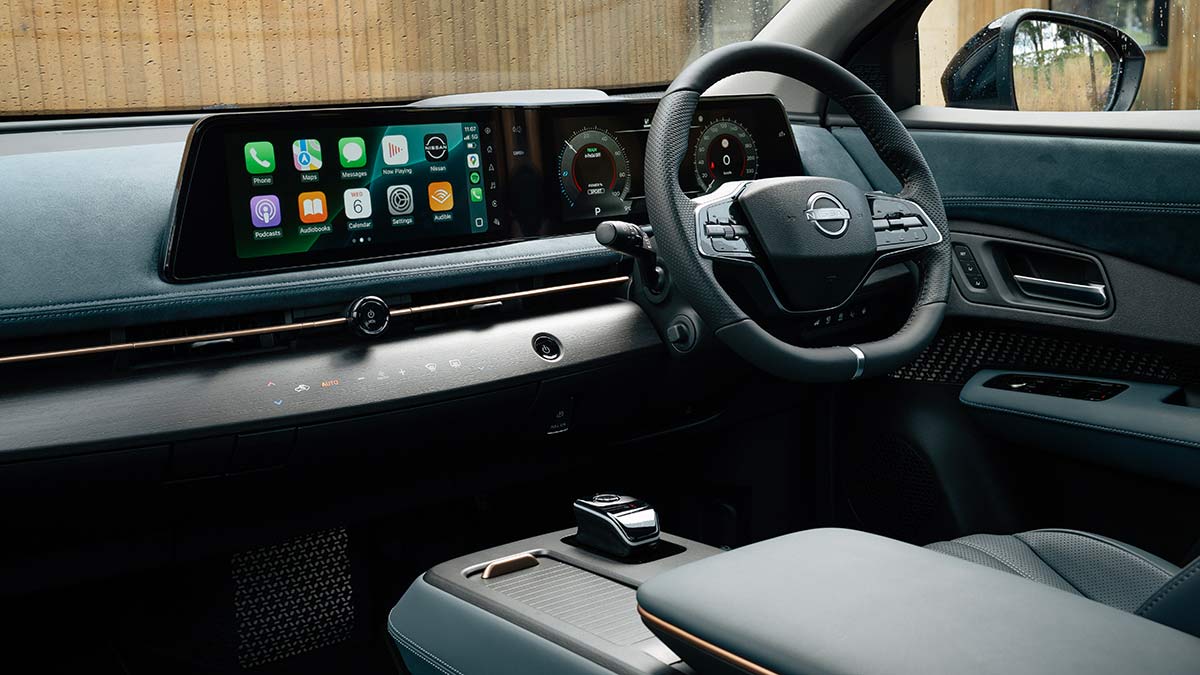
The Nissan Ariya features dual 12.3-inch digital screens and capacitive-touch climate controls on the lower dash area and centre console.
How much does the 2025 Nissan Ariya cost?
The 2025 Nissan Ariya is priced from $55,840 plus on-road costs (or $60,731 driveaway for private buyers in Victoria), opening with the Engage model with a single-motor/front-wheel drive layout and 63kWh battery.
From there, the higher-spec Advance with the same mechanical package starts at $59,840 plus ORCs ($64,899 driveaway), while opting for the Advance+ at $63,840 plus ORCs ($69,067 driveaway) brings a longer-range 87kWh battery, extra features and a more powerful e-motor to manage the additional weight. At the top of the range sits the dual-motor/all-wheel drive Evolve that’s priced from $71,840 plus ORCs ($77,403 driveaway).
For reference, the previous Nissan Leaf hatchback was priced from $50,990 with a 40kWh battery and from $61,490 in 62kWh Leaf e+ guise (both before on-road costs), so on price alone the Ariya has instant appeal as the brand’s new EV ambassador.
Headline tech features across the Ariya range include dual 12.3-inch digital screens for driver’s instrumentation and dash infotainment touchscreen, satellite navigation, voice recognition, digital radio (to go with AM/FM bands), a single wireless phone charging pad and wireless Apple CarPlay/Android Auto smartphone mirroring.
The $60K start point also brings expected creature comforts such as keyless entry/start, dual-zone climate control, one-touch power mirrors (with remote function), heated/folding exterior mirrors, an auto-dimming interior rearview mirror and electronic park brake.
The model grade walk sees Advance add synthetic leather accents to the standard charcoal cloth seat trim, six-way power-adjustable and heated front seats, a heated steering wheel, air purifier, 10-speaker Bose stereo (up from the basic six-speaker unit) and a power-operated tailgate.
In terms of equipment, the ‘plus’ in Advance+ brings black fake leather upholstery with pseudo-suede inserts, a panoramic glass roof, extra front power seat adjustment and position memory, front seat ventilation, rear outboard seat heating and, not least of all, a power-sliding centre console.
That leaves the flagship Evolve to put some icing on the cake with Blue Nappa leather seat trim, power-adjustable steering wheel, a higher-tech rearview mirror (working with an extra rear-mounted camera), Snow driving mode (adding to Standard, Eco and Sport) and exterior mirror memory and tilt-to-reverse functions.
Options are kept to a minimum, with exterior colours the main area where choices abound. Aurora Green is standard, while Pearl Black and Gun Metallic add $1037 and a two-tone White Pearl with a black roof costs $1562. The lower-tier Engage and Advance models also offer Ceramic Grey and White Pearl for $1037, while three other two-tone colours (with black roof) are reserved for Engage and Advance – Blue Pearl and, as seen on the cars in this review, Ceramic Grey and the striking Akatsuki Copper (both $1562).
As a launch special, Nissan has upgraded about 400 single-motor models – across Engage, Advance and Advance+ – with a 22kW onboard charger (valued at $3000), allowing for three-phase AC charging where supplied at domestic or commercial premises. The standard 7.4kW onboard charger manages only single-phase power, while the range-topping Evolve has the 22kW charger as standard.
There is a ‘flat price’ servicing program for Ariya that’s available through Nissan dealers equipped to handle EV servicing. This network is currently at 92 outlets across Australia but should increase to about 100 in the coming months, covering all major metropolitan and regional centres. The service schedule is every 12 months or 20,000km, whichever comes first, and each of the first five visits to the dealer is capped at $299 under the program.
The Ariya is covered by Nissan Australia’s five-year/unlimited-kilometre new vehicle warranty, which can extend to 10 years/300,000km if you service the EV through the company’s franchised dealer network.
The high-voltage battery has a separate eight-year/160,000km warranty, coming into effect if capacity loss over that period is more than three bars (falling below nine from a maximum 12) as shown on a gauge inside the EV. At nine bars, Nissan says this represents about 70-75% of the battery’s original capacity.
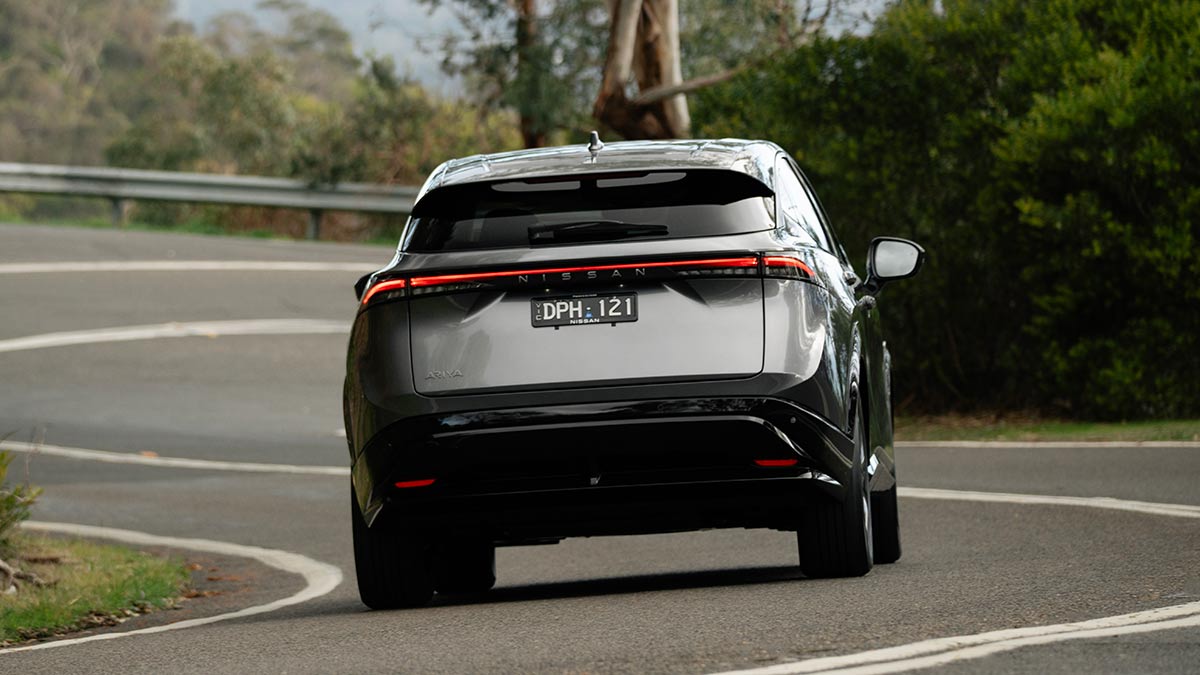
The curved roofline of the Nissan Ariya SUV flows into the tailgate, where thin LED lights run across the body.
2025 Nissan Ariya exterior design
The 2025 Nissan Ariya cuts a striking pose and sticks out a mile in the Akatsuki Copper body colour, adopting a Murano-like position next to the brand’s more conservative and biggest-selling model – the Nissan X-Trail – which sits in the same class but is an altogether different proposition with petrol and hybrid powertrains, a seven-seat option and more.
The five-seater Ariya’s design reflects the fact that it was developed from the ground up as an EV and uses this advantage – the lack of a conventional powertrain, the battery built into the chassis as a structural component, etc – to maximum effect.
In the name of creating what Nissan claims is “the most spacious cabin in its class”, the wheels are pushed to the corners of the car to achieve a 2775mm wheelbase – 15mm longer than the X-Trail – and Ariya’s overall width is a broad 2172mm (including mirrors), a substantial 107mm wider than X-Trail, which stands taller and has longer overhangs than the EV.
Overall, Ariya stretches 4595mm from end to end and has a 1660mm height at the top of its low, arching roofline, with 182mm ground clearance in models with the 63kWh battery and 180mm in those with the 87kWh power pack.
Visual highlights include the big, dark ‘shield’ grille, thin LED headlights (with four 20mm mini-projectors and sequential turning signals), the crease (or horizon line, as designers like to call it) that runs along the side of the car, the steeply raked rear pillar which flows neatly into the tailgate and the one-piece rear LED light ‘blade’.
The single-motor models have attractive 19-inch alloy wheels, while the dual-motor flagship runs on 20-inch rims, all with aerodynamic covers.
What is the Nissan Ariya like inside?
We’re not convinced the 2025 Nissan Ariya has the biggest cabin in class – perhaps the manufacturer’s claim dates back to its European launch in 2022 – but there’s no doubt about the EV’s roominess and the sprawling space created with its interior design.
The first sitting did bring back memories of this writer’s gone-but-not-forgotten 1993 ED Ford Falcon (with front bench seat and column shifter), such is the vast amount of space left under the Ariya’s dash that grows to epic proportions when the power-operated centre console on the Evolve or Advance+ is pushed as far back as possible.
But it’s a modern and finely crafted affair compared to an archaic Aussie sedan, impressing with elegant design, soft surface treatments, feelgood paper lantern graphic elements, plush seats and easily mastered controls. The latter includes capacitive-touch climate and driving mode/e-Pedal switchgear integrated into the fake wood veneer on the dashboard and centre console respectively.
In an age where EVs can be sometimes challenging and confronting to operate, the Ariya feels a lot like any other new Nissan model and has strong family ties with its large, clear digital instrument cluster, basic infotainment touchscreen, simple drive controller, tactile multifunction steering wheel, conventional column-mounted stalks, intuitive door switches, big push-button start and stereo on/off buttons, and so on – all the things we’ve grown accustomed to using in cars, but which seem to be disappearing fast with certain brands.
Indeed, Ariya is making a strong pitch for our vote as the easiest EV on the market to operate.
It’s not blemish-free, with Nissan designers’ pursuit of interior roominess leaving shortfalls in practical elements. That hulking centre console is monolithic, providing only shallow trays under the soft-padded lid and, at its front foot, a single slot for an upright phone alongside the USB-A/C and 12V power points. The two gloveboxes tucked under the dash are only large enough to hold, well, two pairs of gloves and not much else. Even the door bins seem undersized.
The net result is all that floor space created up front seems wasted and the driver and front passenger would be better served with more practical storage facilities.
Other issues? Taller folk might find the high-mounted driver’s seat and its limited range of adjustment perches them up too close to the headlining. The front passenger misses out on seat lumbar adjustment, even in the flagship Evolve. As one driver found, the heated windscreen in the top-of-the-range model can prove distracting with the tiny electrical conductors embedded in the glass creating unwanted reflections at times.
As much as we value its ease-of-use, the centre touchscreen also feels a generation behind some of its rivals that have stronger computing power for extremely quick responses to inputs and sharper resolution for graphics (such as navigation) and camera views.
The second row in the Evolve offers decent comfort for outboard passengers, helped by generous seat proportions and three-stage adjustable heating, plus sufficient legroom and headroom for taller travellers, even with the sloping roofline and panoramic glass overhead.
Two USB-C ports are provided but here too the storage facilities are only basic, the air vents are narrow, foot space under the front seats is lacking and the centre console needs to be moved well forward to create enough room for a passenger in the middle position.
The boot floor is positioned high in the Ariya, which is convenient for loading and unloading but does restrict the available space. Nissan quotes a maximum 466-litre cargo capacity (to the roof, not the rear seatbacks as measured in some rival cars) for single-motor variants, reducing to 408L in the dual-motor Evolve due to its second e-motor mounted on the rear axle.
Volume increases to 1350/1280L (single/dual) when the 60/40-split folding rear seats are lowered, but it doesn’t leave a flat floor and in overall terms the figures are well down on the Ariya’s major competitors, such as the Tesla Model Y.
There’s not much in the way of boot underfloor storage in models we tested with the bigger 87kWh battery (Advance+ and Evolve), with only just enough room for a charging cable and a tyre repair kit below the two floor panels. The Ariya does not have a spare wheel and misses a front trunk, too. Nissan says it designed the EV with components such as the air-conditioning unit pushed well forward into the under-bonnet area to maximise cabin space.
Is the Nissan Ariya good to drive?
Our Victorian launch drive of the 2025 Nissan Ariya took us around Melbourne from Tullamarine before heading down the Mornington Peninsula to RACV Cape Schanck Resort. This provided brief stints in the single-motor/front-drive Advance+ and dual-motor/AWD Evolve, both of which proved to be smooth, comfortable and quiet on the road.
Despite their high-series placement in the model range, neither car feels set up as a sporting or performance champion. The 178kW/300Nm e-motor in the Advance+ might have an extra 18kW of power over the lower-grade Engage and Advance, but this is all about overcoming the extra weight brought with the longer-range 87kWh battery and Nissan’s official acceleration figures make clear that it’s a touch slower from 0-100km/h – completed in 8.1 seconds.
Tipping the scales at 2078kg, the Advance+ nonetheless delivers adequate performance to manage suburban and extra-urban duties with relative ease, building momentum in super-smooth and linear fashion, responding swiftly to driver demands at higher speeds and never feeling underdone.
The twin-motor Evolve is even heavier, of course, with its extra hardware that brings its kerb weight up to 2234kg. This likewise reins in the potential of its total 290kW/600Nm output, as shown with Nissan’s claimed 5.6sec 0-100km/h time, and while the driver has a sense of the weight onboard the Evolve delivers an eager response upon request in all situations.
Based on this first drive, we’d rate the Ariya’s ride comfort, composure and refinement as standout attributes. On both cars, the quietness in the cabin at high and low speeds was first-rate and the front strut/rear multilink suspension soaked up multiple stretches of Melbourne’s broken bitumen road network with aplomb.
The ride is firmer on the Evolve with its extra bulk and 20-inch wheel and tyre combination, but never harsh, while traction levels are high with the e-4ORCE four-wheel drive system onboard. That said, the $8000 premium brought with the Evolve is hard to swallow given the Advance+ combines proficient front-drive handling traits with an absorbent ride and excellent refinement.
Both have an e-Pedal mode that allows for one-pedal driving but doesn’t bring the car to a complete stop at intersections. It’s designed to help smooth out the drive and improve efficiency, and with the latter we found the Advance+ and Evolve both consumed electricity at a rate that was comparable to Nissan’s claimed 19.1kWh/100km and 20.8kWh/100km figures respectively.
The claimed driving range, based on the lab-based WLTP test rather than real-world conditions, is 504km for the Advance+ and 487km for Evolve, both using the 87kWh battery pack.
To recharge, Nissan says a home EV charger will need 12.5 hours to replenish the battery from 10-100% with 7.4kW AC single-phase power, down to 4.5h with a 22kW three-phase supply. At a public EV charging station, the Ariya can handle DC fast-charging up to 130kW, at which point the carmaker claims it should take 40 minutes to charge the battery from 10-80%. A 50kW DC supply will take about 90min, according to Nissan.
Bidirectional charging that was a feature of the Leaf is missing on the Ariya due to Australia and other export markets adopting the more universal CCS2 charging port rather than the CHAdeMO plug still used in Japan.
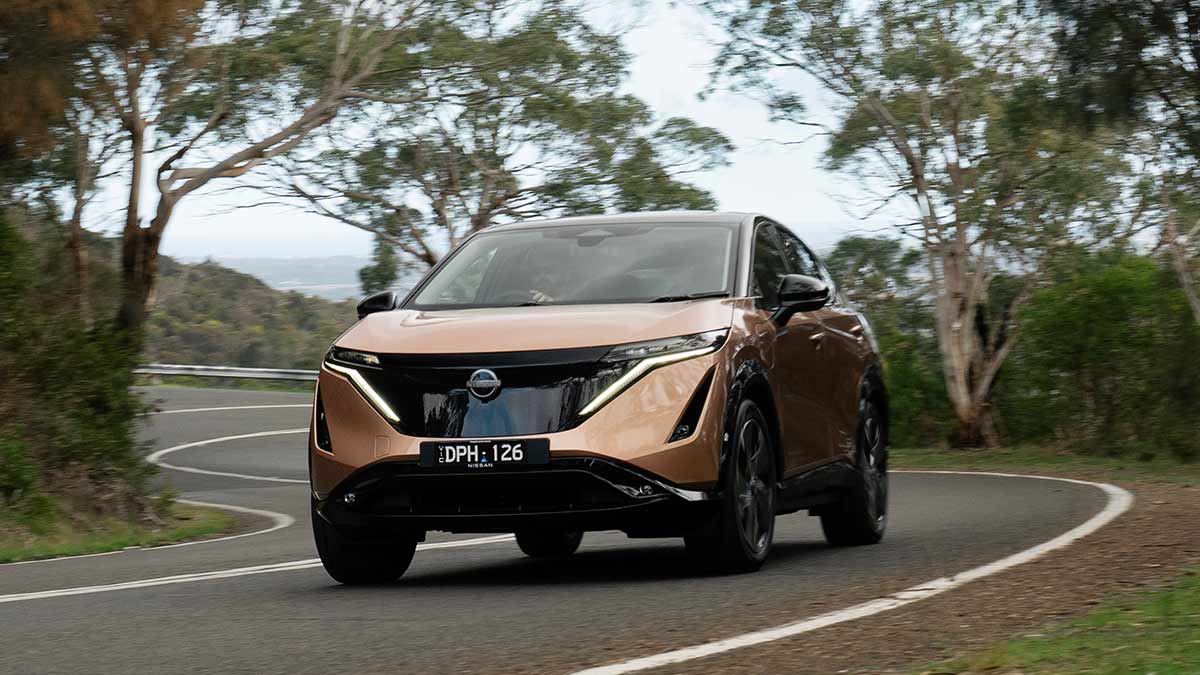
The dual-motor Nissan Ariya Evolve has good all-round performance but asks an $8000 premium over the longer-range single-motor Advance+ variant.
What safety features does the Nissan Ariya have?
The 2025 Nissan Ariya is fitted standard with a wide range of advanced driver assistance systems (ADAS) such as ProPilot+ lane keep assist, blind spot intervention, driver attention monitoring and autonomous emergency braking with pedestrian and cyclist detection.
All models have an Acoustic Vehicle Alerting System (AVAS), rear cross traffic alert, front and rear parking sensors and a rearview camera, but the base Engage misses out on a 360-degree surround-view monitor. Dusk-sensing headlights and automatic high beam is found at all grades, but the flagship Evolve goes a step further with adaptive beams. The head-up display on Evolve and Advance+ is also a welcome inclusion.
The traffic sign recognition worked well on our first drive, providing accurate speed readings from a broad range of signage and picking up school zones without fail. Adaptive cruise control and the various lane keeping aids also delivered consistent responses.
Airbag protection includes a centre airbag between the driver and front passenger, as well as dual front, front side and head-protecting curtain airbags extending to the back row on either side of the car.
On sale overseas since 2022, the late arrival Down Under of the 2025 Nissan Ariya has given it an advantage in terms of its ANCAP safety rating because the EV qualifies for a maximum five-star rating based on the original 2022 European NCAP testing. Assessment protocols were not as strict back then as they are in 2025, which is worth keeping in mind when comparing against newer rival models.
The Ariya is not capable of receiving over-the-air (OTA) software updates in Australia and does not have connected services that integrate important safety features such as emergency collision notification (eCall).
More: What is eCall and how crash detection technology can save lives
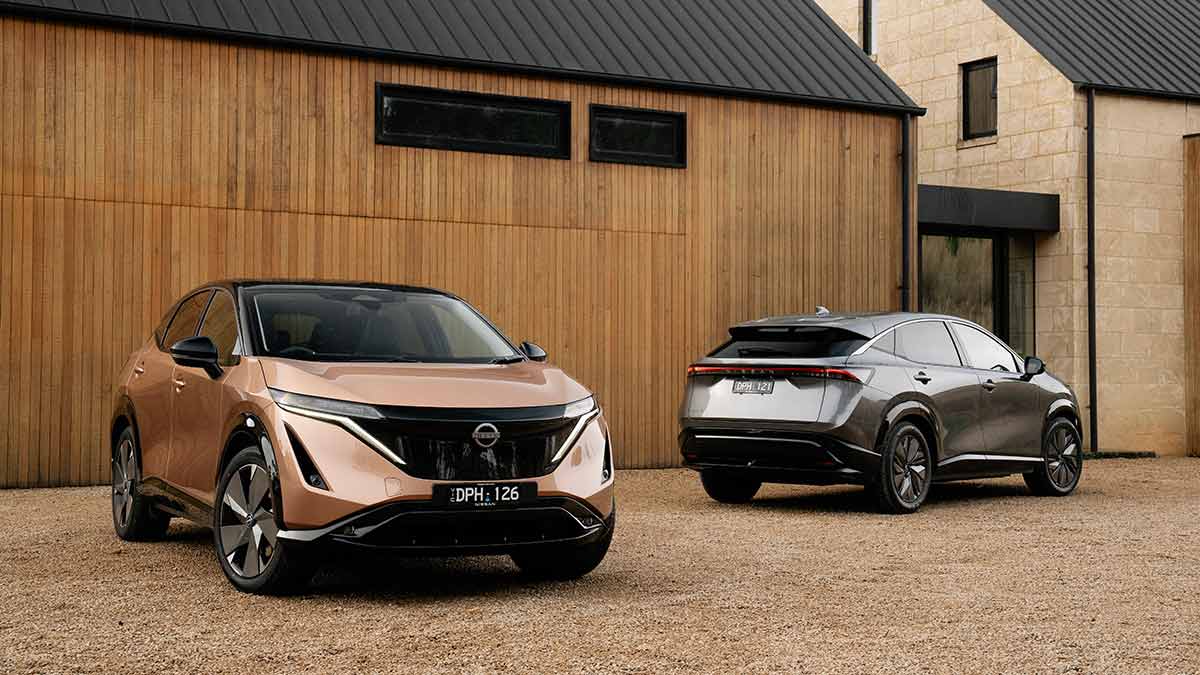
The Nissan Ariya Evolve finished in copper paintwork draws lots of attention, but the Evolve+ (right) hits the sweet spot on pricing and all-round performance.
How does the Nissan Ariya compare?
Starting from just over $60,000 driveaway for Victorian private buyers, the 2025 Nissan Ariya is positioned below the top-selling EV in the medium SUV segment, the Tesla Model Y (from $64,373), but is priced above other popular models such as the BYD Sealion 7 (from $58,748.90) and Kia EV5 (from $56,770 under a current offer throwing in on-road costs).
It is well priced next to fellow Japanese-market EVs in class, most notably the much-more-expensive Toyota bZ4X (from $71,681) and the dual-motor-only Subaru Solterra (from $75,884), while other competitors from traditional rivals include the Volkswagen ID.4 (from $65,524) and Hyundai Ioniq 5 (from $75,740.10).
Looking past BYD, Chinese brands are stationed at various price points with cars like the Geely EX5 (from $44,376), Leapmotor C10 (from $47,500), Deepal S07 ($54,355), MG IM6 (from $60,990) and Zeekr 7X (from $63,977).
So, there are lots of choices around the $60,000 mark from traditional and emerging brands. Lots to consider.
More: The cheapest electric cars in Australia for 2025
Should I buy a Nissan Ariya?
Regarded as a pioneer in the EV space, Nissan has been overrun by competitors at a time when electric cars are gaining much wider acceptance in Australia.
Despite being well into its current lifecycle, the 2025 Nissan Ariya is a giant step back into relevance after a long run with the tired Leaf and is sure to appeal to brand loyalists and first-time EV owners who have confidence in the badge, the organisation behind it and the approachable nature of this competent car.
Ariya does feel behind the times with no remote or connected services, V2L capability, AI assistance and more. That’s sure to dissuade technophiles but still leaves the door open for those who want an uncomplicated route into the EV landscape.
The information provided is general advice only. Before making any decisions please consider your own circumstances and the Product Disclosure Statement and Target Market Determinations. For copies, visit racv.com.au. As distributor, RACV Insurance Services Pty Ltd AFS Licence No. 230039 receives commission for each policy sold or renewed. Product(s) issued by Insurance Manufacturers of Australia Pty Ltd ABN 93 004 208 084 AFS Licence No. 227678.

